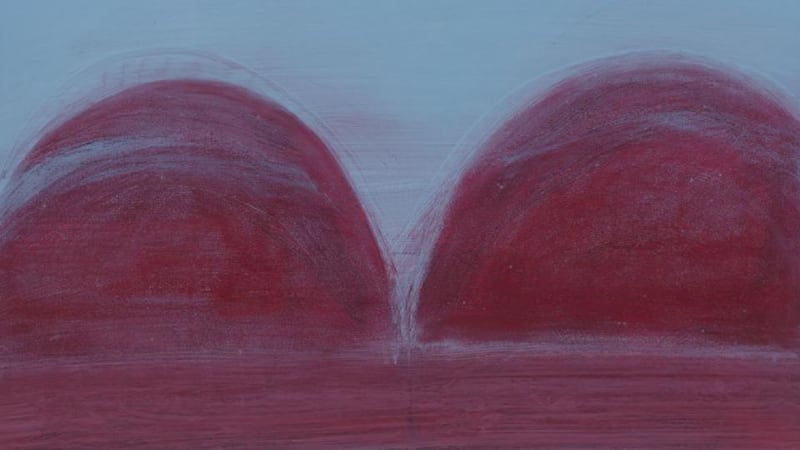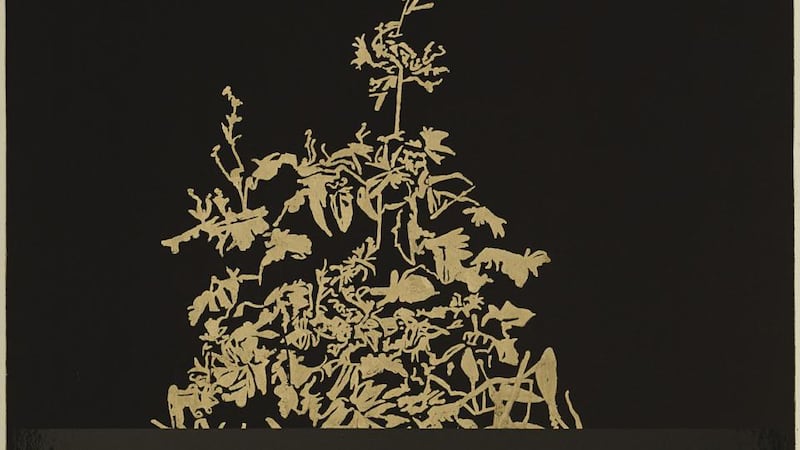Shot at Dawn – Chloe Dewe Mathews
Imma, Dublin
*****


The quintessential news photograph captures the moment and puts us right at the heart of the action. In Shot at Dawn, Chloe Dewe Mathews takes an entirely different approach. Her photographs are about horrible, disturbing events, and about drawing our attention to and encouraging us to think about them, but by the time she arrives on the scene, what has happened is in the distant, historical past.
Dewe Mathews practises a kind of analytical photography, aiming for a considered engagement with her subject rather than a decisive moment that slots into a 24-hour news cycle. As we progress through a series of 100th anniversaries marking stages of the first World War, her project is especially thought-provoking. Rather than viewing the conflict as a struggle between opposed, monolithic blocks, friend and foe, she concentrates on the fate of some of the British, French and Belgian servicemen who were tried and executed for cowardice and desertion by their own side.
Over a two-year period, Dewe Mathews began by researching in the archives, which only became publicly available in Britain in the 1990s. She worked her way through court-martial and other documents and referred to old aerial photographs in an effort to pinpoint the locations where the men were executed by firing squad. In the end, her quest was narrowed down to 23 individual cases (not all the photographs are on view). As often as possible, she visited each site and photographed it at the time – usually dawn – and season that the execution took place. If she could not be certain of the location of death, she photographed the place where the soldiers were held.
Once you come to the photographs with an awareness of this context, they are moving, elegiac, melancholy and disturbing. As she sees it, by presenting us with a careful image of the physical place, whatever the changes since, she is restoring a sense of a real human being into the space.
The first World War executions have understandably inspired a considerable literature. Initial disquiet surrounding them has steadily grown. Dewe Mathews quotes the late, Cork-born Anthony Babington, a barrister, magistrate and pillar of the establishment, himself almost fatally wounded while serving during the second World War. He wrote a pioneering account of courts martial from 1914 to 1920, For the Sake of Example: "While those executed were branded as 'shirkers', 'funks' and 'degenerates' . . . ever since, the manner in which they were tried and their subsequent treatment have given rise to a profound unease in the national conscience."
Shot at Dawn was an enlightened commission by the Ruskin School of Art as part of a series marking the centenary of the first World War. By their nature, big bureaucratic systems, not just armies in wartime, are distrustful of individuals and dissent. Dewe Mathews's project is a sobering reminder of just how brutal and cruel they can be. (An accompanying book with texts by Geoff Dyer, Sir Hew Strachan and Dr Helen McCartney is published by Ivorypress, €39.95).
[ imma.ieOpens in new window ]
Nightshade – Paul Nugent
Kevin Kavanagh Gallery, Dublin
*****
In the past, Paul Nugent’s paintings have addressed questions about abstraction and representation with wit and insouciance. By overlaying religious iconography, for example, with monochrome veils of pigment, to the point of virtual but not quite absolute invisibility, he evoked claims about the spiritual content of abstract painting and about spirituality in general. Another layer of meaning was added by the fact that he was often the subject, kitted out in clerical garb.
His meticulously rendered accounts of lavish, palatial interiors referred to the association between fine art and opulence. Everything is thrown into question, but meaning was never prescriptive. Rather, the paintings, which are visually enthralling, raised many questions and invited continual reinterpretation.
With Nightshade he adds to this interrogative process. Here, negligible motifs, humble plants, are accorded the enhanced visibility usually bestowed on sacred subjects in pre-modern art via the application of gold and silver, traditionally reserved for the sacred. Nightshade is suitably ambiguous, a species that produces several invaluable, nutritive crops, including the potato and the tomato, though they are significantly outnumbered by their poisonous cousins. A dying forest, meanwhile, hints at regeneration. The paintings are dazzling to look at and rich in layers of meaning.
[ kevinkavanagh.ieOpens in new window ]
The Wandering Albatross and Other Stories – Mary Rose Binchy
Cross Gallery, Dublin
****
Mary Rose Binchy's starting point was Dan Smith's song The Weight of Living, which draws on the imagery of Coleridge's The Rime of the Ancient Mariner, urging listeners to set free the albatross weighing them down. For Binchy the bird becomes a symbol of freedom and possibility. She locates this free spirit in a world of mythic narrative, of limitless spaces inhabited by gods and magical creatures. Like the song, it is straightforward work that aims to be uplifting.










